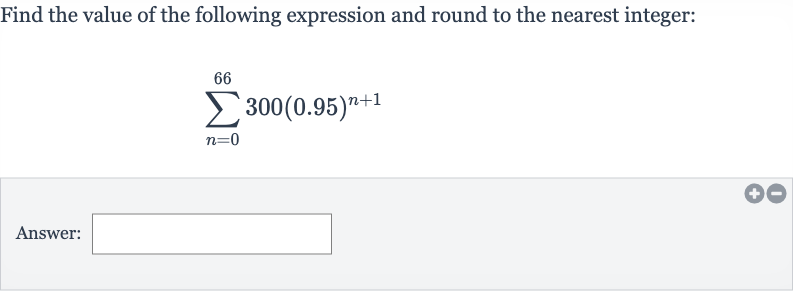Full solution
Q. Find the value of the following expression and round to the nearest integer:Answer:
- Given series information: We are given a geometric series with the first term and the common ratio . The sum of a finite geometric series can be found using the formula , where is the number of terms. In this case, we have terms (from to ).
- Calculate first term: First, calculate the first term of the series: .
- Calculate th power of common ratio: Now, calculate the th power of the common ratio: . This will be used in the formula for the sum of the series.
- Substitute values into sum formula: Substitute the values of , , and into the sum formula: .
- Calculate numerator of fraction: Calculate the numerator of the fraction: . This requires a calculator for an accurate result.
- Calculate denominator of fraction: Calculate the denominator of the fraction: . This is straightforward and equals .
- Divide numerator by denominator: Divide the numerator by the denominator to find the sum of the series: .
- Round to nearest integer: Finally, round the result to the nearest integer to get the final answer.

